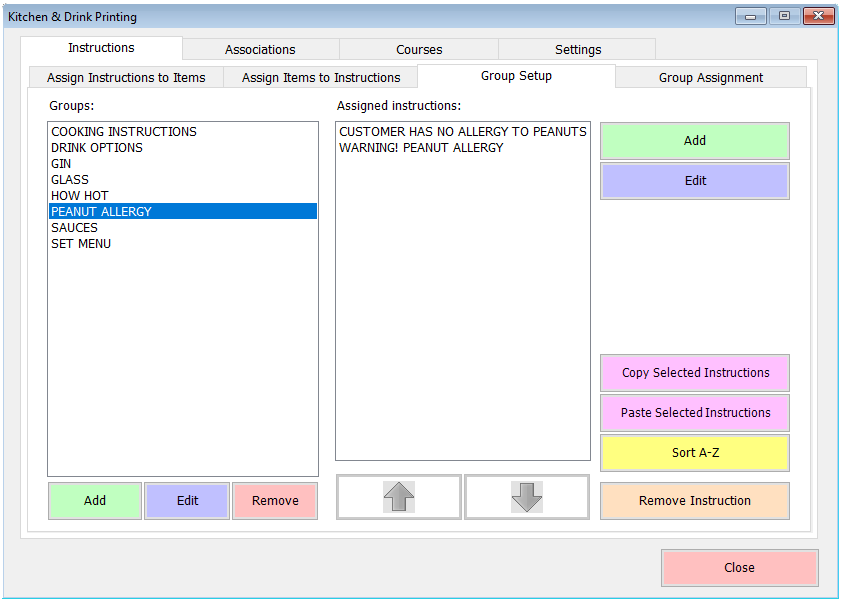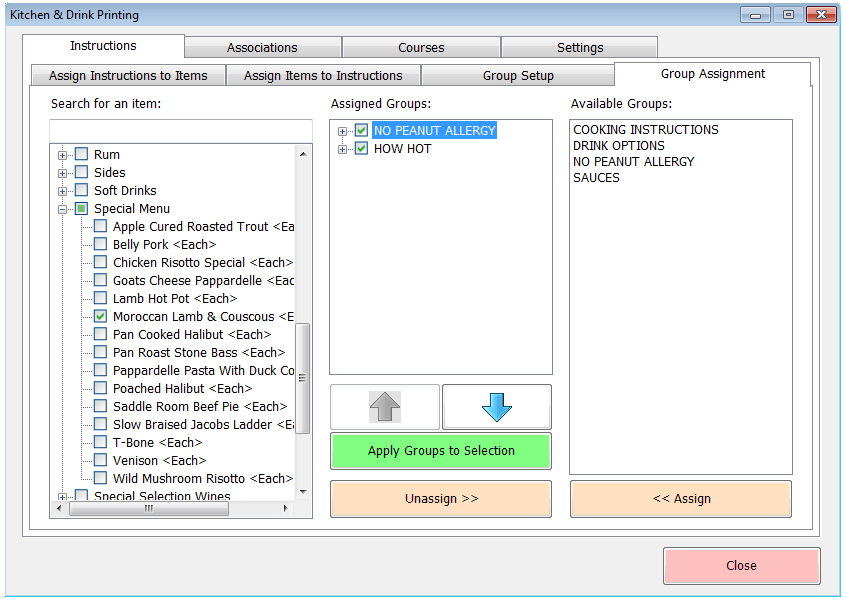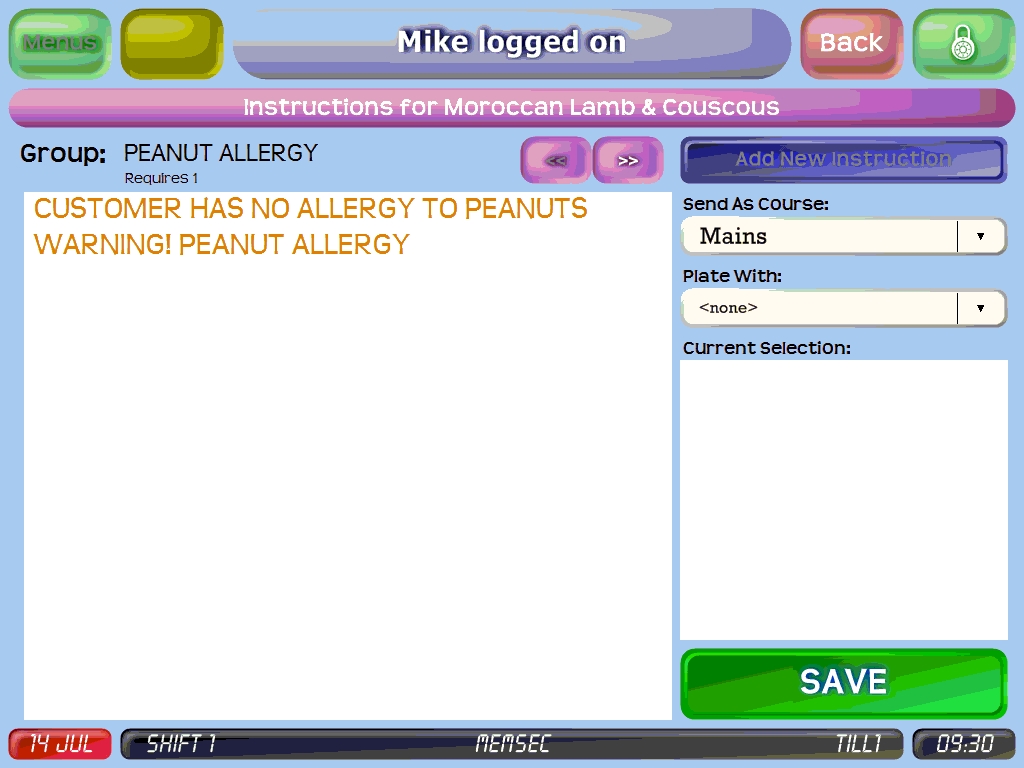How-To Guides
Reduce allergen mistakes
Reduce allergen mistakes
How to use instruction groups to make sure allergies are considered when entering food orders.
Food allergies are an important part of any restaurant’s planning and operation. Legislation is of course in place to ensure that your menus inform customers of allergens in your dishes but mistakes can still happen. If this is of particular concern for you, Memsec7 can be adapted to ensure that staff have verified that a customer ordering any dish with allergens is aware and has no allergy to those ingredients.
To do this we use kitchen instruction groups. If you’re not familiar with these, please click here first for some background.
First we need to decide which allergies we’re going to test for. In this example we’ll use just peanut allergy. Next we create an instruction group for each allergy. This should be configured so that one and only one selection is required. We’ll then add two instructions to this group, the first of which is a confirmation statement that the customer is not allergic, and the second a warning that there is an allergy. Having a binary choice between these two should ensure that the server makes an active decision to declare that the customer has no allergy, presumably after asking the relevant question.

Next we need to assign this group to all the dishes on our menu that we know contain this allergen. If there are other groups associated with those items it might make sense to put this one first, since if the customer does have an allergy there’s little point in asking other questions about how they’d like the dish served (unless the warning can serve as notice to the kitchen to exclude the relevant ingredient in preparing this particular serving). You can order the groups assigned to an item using the up and down arrows above the ‘Apply Groups to Selection’ button in the Group Assignment tab.

Once you’ve assigned the group(s) to the relevant dishes and clicked ‘Apply Groups to Selection’ the till should be ready to implement the new checks. Whenever an item with one of these allergy groups is sold, the first thing the staff member will have to do is confirm that the customer has no allergy. By asking at this point they’ll be able to ensure that the dish is safe to be eaten by the person ordering it and the kitchen will receive printed confirmation that the customer has no allergy. If on the other hand the customer has an allergy then the staff member should press ‘Back’ on the till, thus not adding the item to the bill, unless as indicated above it’s possible for the kitchen to prepare a special version of the dish without the allergen.

PLEASE NOTE: It is imperative that if you implement this method you also educate your staff to ask the question every time and not to make any assumptions about the customer. Whilst it might seem reasonable to assume that somebody ordering Chicken Satay doesn’t have a peanut allergy, that’s very much the whole point of this additional process. Using instruction groups this way is by no means a guarantee that you will avoid allergic reactions but if it is used properly you can at least be sure to ask the question.
